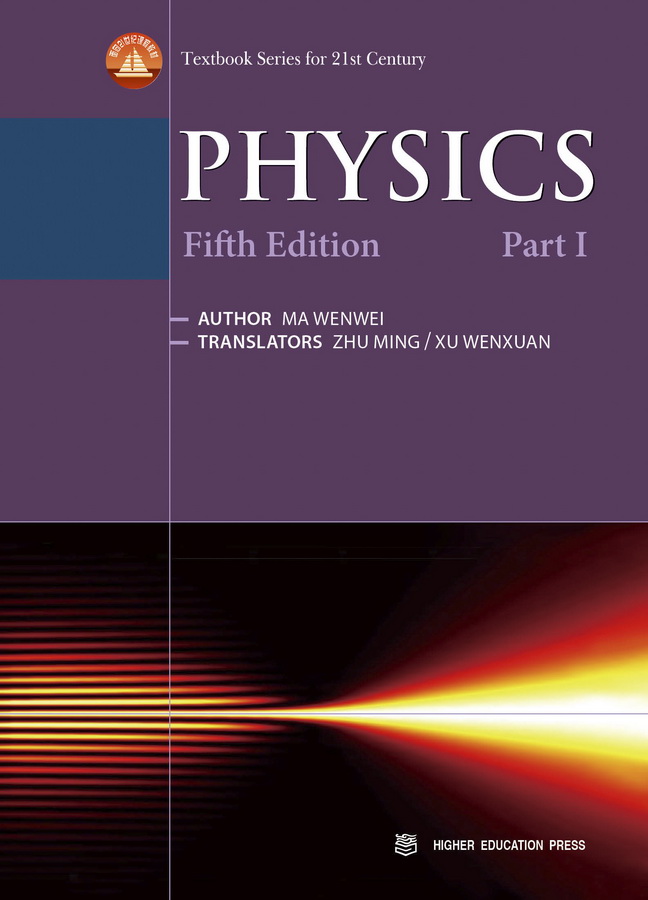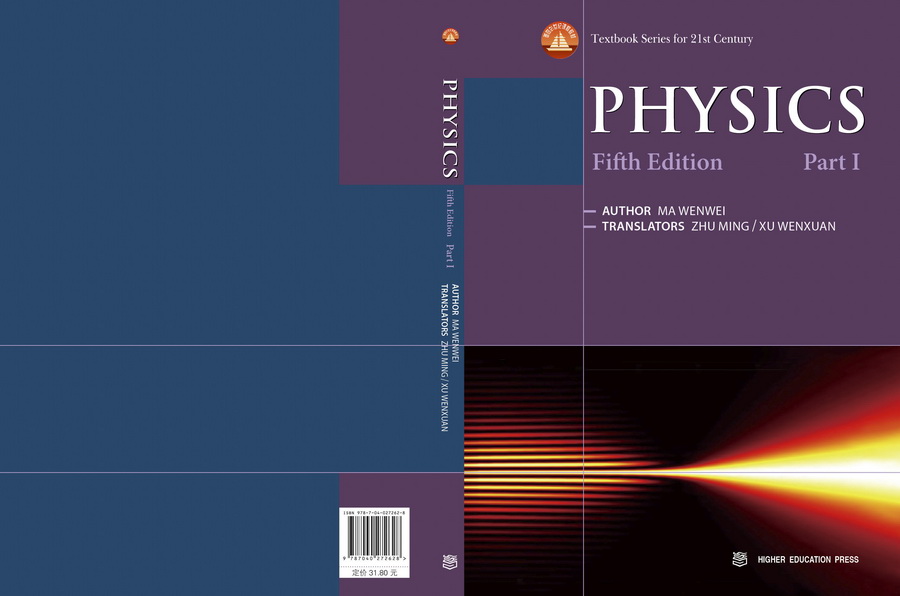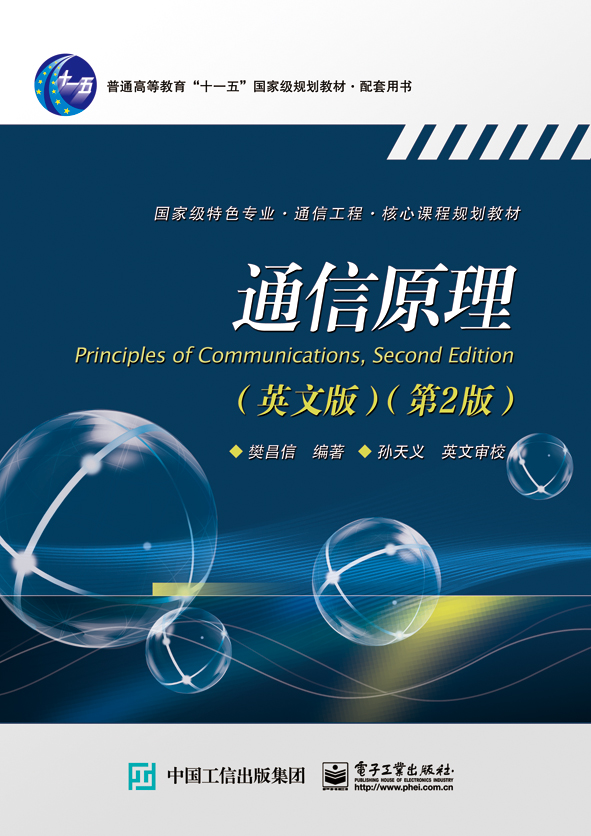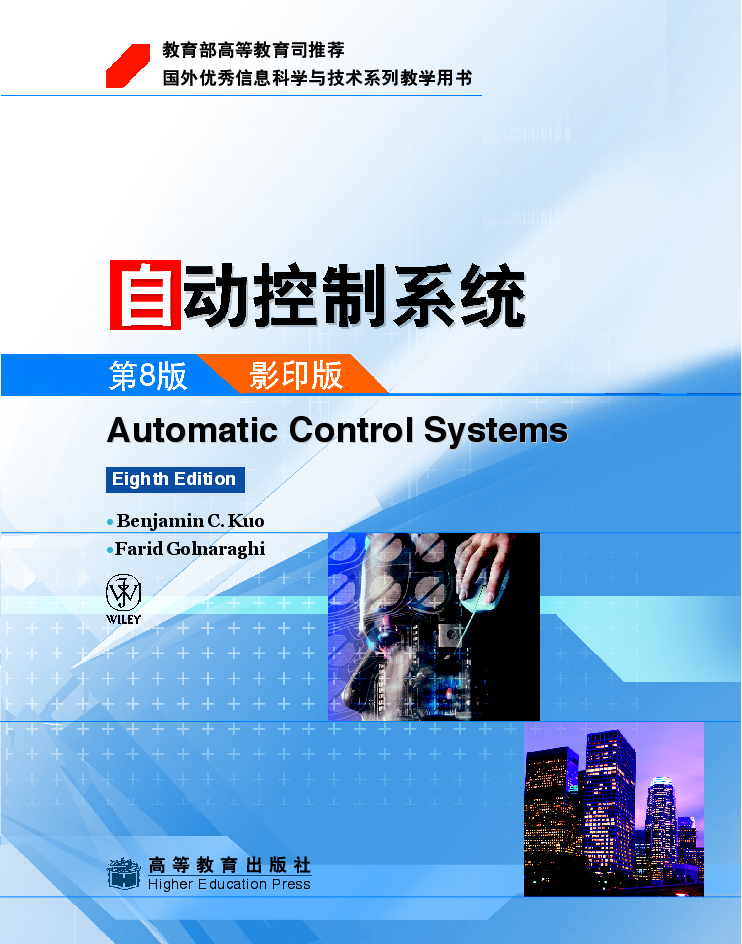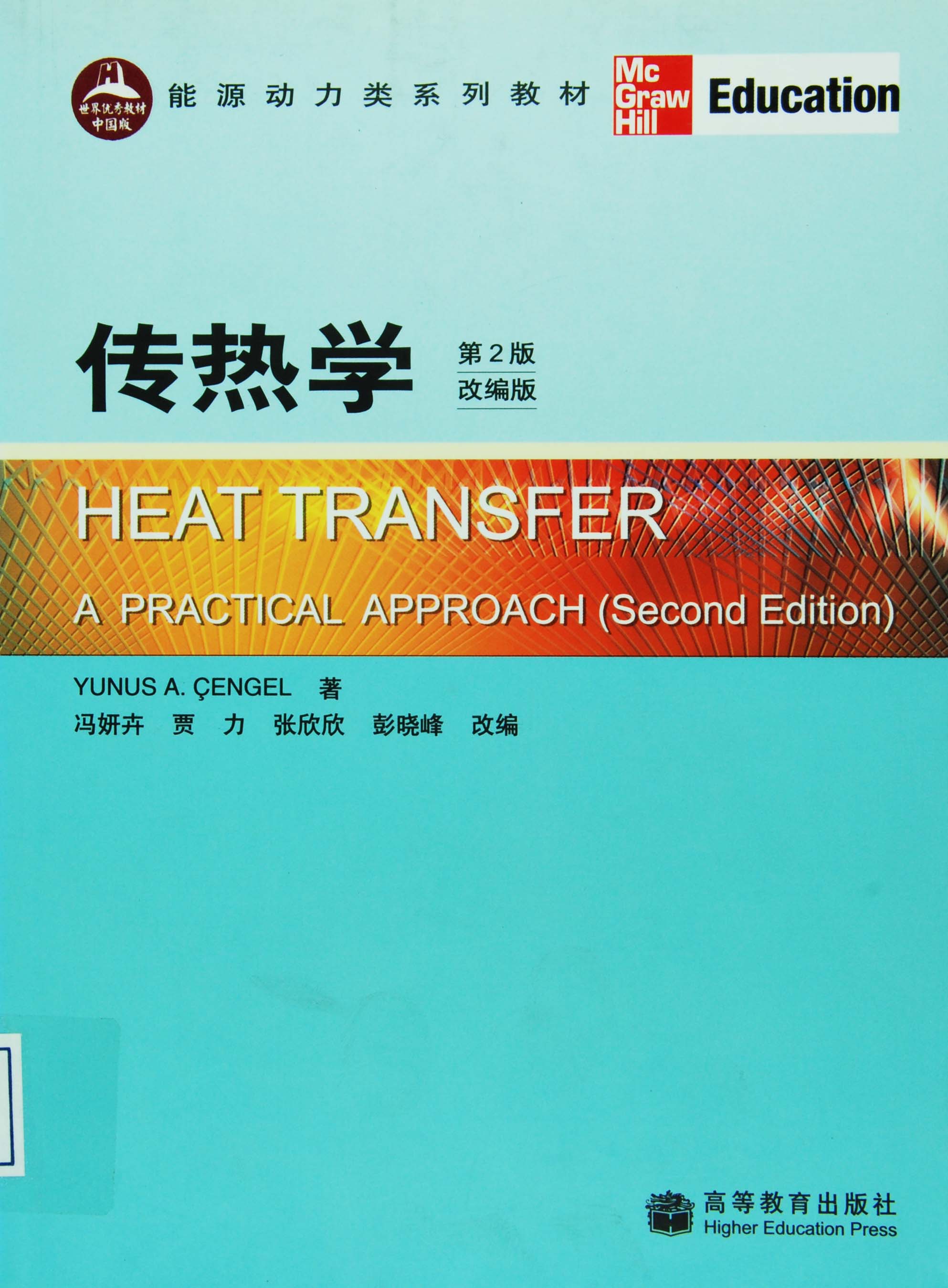物理学(第5版)上册(英文版) / 面向21世纪课程教材
作者: 马文蔚,朱明
出版时间:2009-07
出版社:高等教育出版社
“十二五”普通高等教育本科国家级规划教材
- 高等教育出版社
- 9787040272628
- 1版
- 185344
- 46250268-3
- 平装
- 异16开
- 2009-07
- 460
- 325
- 理学
- 物理学
- O4
- 工学
- 本科
On the base of Physics(Fourth Edition),the revision of this book is made consulting The Basic Requirement of Teaching University Physics Course for Non-physical Major in University of Science & Engineering (Discussion Draft)and constituted lastly by sub-committee of physics essential lecture teaching guidance for non-physics specialty,Education Department.What in the book contains all of kernels required in the basic requirement,moreover,a certain amount of extension content is presented as well as for different majors.In the revision,this book keeps specialties such as logical system,well-situated profundity and extension,proper capacity,wide flexibility coming from the original vision of the book.Meanwhile,it adds more contents in following aspects: modern physics,the annotation with modern viewpoints for classic physics,and the effects to science and technology from the achievements of modern physics.
This book has two volumes.In Volume Ⅰ,it contains mechanics and electromagnetic.And in Volume Ⅱ,it contains oscillation and undulation,optics,theory of molecular dynamics and basic of thermodynamics,theory of relativity,quantum physics.There are books The Applications of Physical Principle in Engineering and Technology(Third Edition),The Analysis and Solution for Exercises In Physics(Fifth Edition),Guidance for Learning Physics(Fifth Edition) and the multimedia The Electronic Teaching Plan for Physics(Fifth Edition)to form a complete set with this book.
This book can be the teaching material of the higher education for non-physical major in university of sciences and engineering.It can also be selected as texts by the relevant fields of social sciences and natural sciences and read by social readers at large.
前辅文
Chapter 1 The Kinematics of Mass Points
1-1 The Description of the Motion of Mass Points
1 Reference frames,mass point
2 Position vector,equation of motion and displacement
3 Velocity
4 Accelerations
1-2 Motion in a Circle
1 Planar polar coordinate system
2 Angular velocity of the circular motion
3 Tangential and normal acceleration of circular motion,angular acceleration
4 Circular motion with constant speed and circular motion with constant variation rate of speed
1-3 Relative Motion
1 Time and space
2 Relative motion
QUESTIONS
EXERCISES
Chapter 2 Newton's Laws
2-1 Newton's Laws
1 Newton's first law
2 Newton's second law
3 Newton's third law
4 Relativity principle of force
2-2 Units and Dimensions of Physical Quantities
2-3 Some Forces often Seen
1 The gravitational force
2 Elastic force
3 Friction force
2-4 Examples of the Applications of the Newton's Law
*2-5 Non-inertial Reference Frames,Inertial Forces
QUESTIONS
EXERCISES
Chapter 3 The Laws of Momentum Conservation and Energy Conservation
3-1 Momentum Theorem of a Mass Point and the Mass Point System
1 Impulse,momentum theorem of a mass point
2 Theorem of momentum of the object system
3-2 The Law of Momentum Conservation
*3-3 The Mass Transport Problem within a System
3-4 The Theorem of Kinetic Energy
1 Work
2 The theorem of kinetic energy of a particle
3-5 Conservation Force,Non-conservation Force and Potential Energy
1 The features of the work done by universal gravitational force and the elastic force
2 Conservation forces and non-conservation forces,the mathematical expression of the work done by conservation force
3 Potential energy
4 Potential curve
3-6 The Principle of Work-energy and the Law of the Conservation of Mechanical Energy
1 The theorem of kinetic energy of a system of particles
2 The theorem of work-energy of the system of particles
3 The law of conservation of mechanical energy
*4. The universal speeds
3-7 Complete Elastic Collisions,Complete Inelastic Collisions
3-8 The Law of Energy Conservation
3-9 Center of Mass,the Law of Mass Center Motion
1 Center of mass
2 The law of motion of center of mass
*3-10 Symmetry and Conservative Law
1 Symmetry
2 Conservation law and the symmetry
QUESTIONS
EXERCISES
Chapter 4 Rotation of Rigid Body
4-1 The Rotation of a Rigid Body about a Fixed Axis
1 The angular velocity and angular acceleration of a rotating rigid body
2 Formula of fixed axis rotation with constant angular acceleration
3 The relationship between angular quantities and linear quantities
4-2 Torque,the Law of Rotation,Moment of Inertia
1 Torque
2 The law of rotation
3 The moment of inertia
4 The theorem of parallel axes
4-3 Angular Momentum,the Law of Angular Momentum Conservation
1 The theorem of angular momentum and the law of the conservation of the angular momentum of mass points
2 The theorem of angular momentum and the principle of conservation of angular momentum of a rigid body rotating about a fixed axis
4-4 Work Done by a Torque,the Theorem of Kinetic Energy of a Rigid Body Rotating about a Fixed Axis
1 Work done by a torque
2 The power of a torque
3 The kinetic energy of rotation
4 The theorem of kinetic energy of a rigid body rotating about a fixed axis
*4-5 The Translation of a Rigid Body on a Plane
*4-6 The Precession of Rigid Body
*4-7 The Newtonian Proposition of the Universal Gravitational Force
1 The calculation of gravitation between objects
2 Proving elliptical orbit
*4-8 The Successes and Limitations of Classical Mechanics
1 Classical mechanics is only applicable for low speed motions,not for high speed motions
2 Determinism and randomness
3 The continuity and quantization of energy
QUESTIONS
EXERCISES
Chapter 5 The Static Electric Field
5-1 The Quantization of the Electric Charge and the Charge Conservation Law
1 The quantization of the electric charge,the charge conservation law
2 The charge conservation law
5-2 The Coulomb's Law
5-3 The Electric Field Intensity
1 Statistic electric field
2 The electric field intensity
3 The electric field intensity of a point charge
4 The superposition principle of electric field intensities
5 The electric field intensity of the electric dipole
5-4 The Flux of Electric Fields,the Gauss Theorem
1 Electric field line
2 The flux of electric field intensity
3 Gauss theorem
4 Examples of applications of Gauss theorem
*5-5 Milikan's Experiment of the Electron Charge Determination
5-6 The Circuital Theorem of Static Electric Field,Electric Potential Energy
1 Work done by static electric field force
2 Circuital theorem of a static electric field
3 Electric potential energy
5-7 The Electric Potential
1 The electric potential
2 The electric potential of point charge electric fields
3 The superposition principle of electric potentials
5-8 Electric Field Intensity and Electric Potential Gradient
1 Equipotential surface
2 The electric field intensity and the electric potential gradient
*5-9 The Electric Dipole in a Static Electric Field
1 The orientation effect of an external electric field on the torque of an electric dipole
2 The electric potential energy and the equilibrium position of an electric dipole in an electric field
QUESTIONS
EXERCISES
Chapter 6 Conductors and Dielectrics in Static Electric Fields
6-1 Conductors in Static Electric Fields
1 Electrostatic induction and condition of electrostatic equilibrium
2 The charge distribution of a conductor at electrostatic equilibrium
3 Electrostatic screening
6-2 Dielectrics in Static Electric Field
1 The influence of dielectric on electric capacity,the relative permittivity
2 The polarization of dielectric
3 The intensity of polarization
4 The relationship between polarized charges and free charges
6-3 Electric Displacement,the Gauss Theorem at the Presence of the Dielectric
6-4 Capacity,Condenser
1 The capacity of an isolated conductor
2 Condenser
3 The series connection and parallel connection of condensers
6-5 Energy of Static Electric Fields,Energy Density
1 The electric energy of the condenser
2 The energy of the static electric field,energy density
*6-6 The Charge and Discharge of the Condensers
1 Charging a condenser
2 Discharging a condenser
*6-7 Applications of Electrostatics
1 Van der Graaff generator
2 Electrostatic removal of dusts
3 Electrostatic separation
QUESTIONS
EXERCISES
Chapter 7 The Steady Magnetic Field
7-1 The Steady Current
1 The electric current,the current density
*2. The continuity equation of the current,the conditions of the steady current
7-2 The Power Source,the Electromotive Force
7-3 The Magnetic Field,the Magnetic Induction
7-4 The Biot-Savart Law
1 The Biot - Savart Law
2 The examples of applications of the Biot-Savart law
3 The magnetic dipole moment
4 The magnetic field of a moving charge
7-5 The Magnetic Flux,the Gauss Theorem of the Magnetic Field
1 The lines of magnetic induction
2 The magnetic flux,the Gauss theorem of magnetic field
7-6 The Ampere Circuital Theorem
1 The Ampere circuital theorem
2 The examples of applications of the Ampere circuital theorem
7-7 The Motions of Charged Particles in Electric and Magnetic Fields
1 The force a charged particle is subjected to in electric and magnetic fields
2 The examples of charged particles moving in a magnetic field
3 The examples of the motions of charged particles in electric and magnetic fields
7-8 The Magnetic Force Acting on a Wire with Current
1 The Ampere force
2 The torque of magnetic force on coils with current
7-9 The Magnetic Media in a Magnetic Field
1 The magnetic media,the intensity of magnetization
2 The Ampere circuital theorem of the magnetic media,the magnetic field intensity
3 Ferromagnetic materials
QUESTIONS
EXERCISES
Chapter 8 The Electromagnetic Induction,the Electromagnetic Field
8-1 The Law of Electromagnetic Induction
1 The phenomena of electromagnetic induction
2 The law of electromagnetic induction
3 The Lenz law
8-2 The Motional and Induced Electromotive Forces
1 The motional electromotive force
2 The induced electromotive force
*3. The electronic induction accelerator
*4. The eddy current
8-3 The Self-Induction and the Mutual-Induction
1 The self-induced electromotive force,the self induction
2 The mutual induction electromotive force,the mutual induction
*8-4 The RL Circuit
8-5 The Energy of the Magnetic Field,the Energy Density of the Magnetic Field
8-6 The Displacement Current,the Integral Form of the Fundamental Equations of the Electromagnetic Field
1 The displacement current,the total current Ampere circuital theorem
2 The electromagnetic field,the integral form of Maxwell's equations of the electromagnetic field
QUESTIONS
EXERCISES
Appendix 1 Vectors
Appendix 2 The Legitimate Metric Units of China and the International System of Units(SI)
Appendix 3 Some Common Data of Air,Water,the Earth and the Solar System
Answers for Exercises in Part Ⅰ

